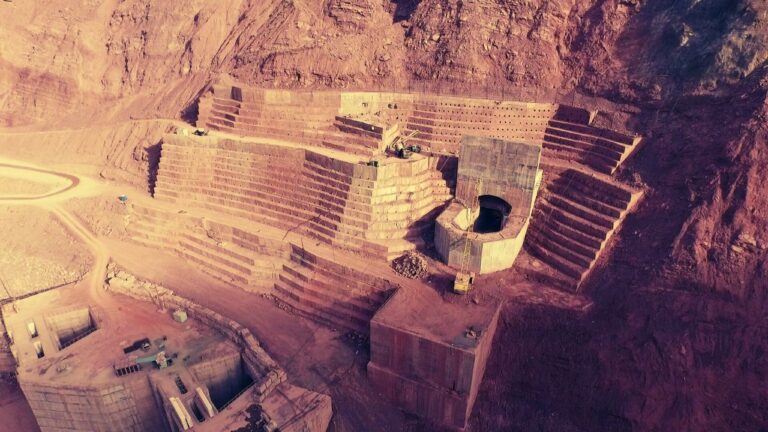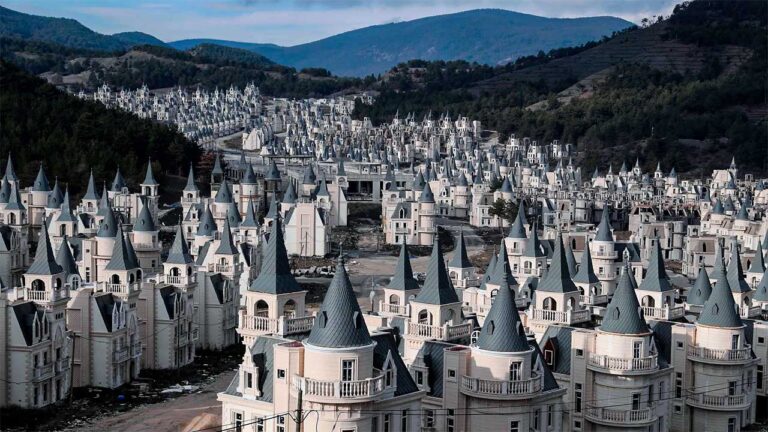Paris’s $1.5 Billion Mega Project to Clean the Seine River
The Olympics is the leading international sporting event held every 4 years. Thousands of athletes from 206 National Olympic Committees and member countries of the International Olympic Committee participate in this global event. The first modern Olympics were in 1896 in Athens, Greece, while the first Winter Olympics were staged in 1924 in Chamonix, France. Since 1994, the Olympic Games have alternated between summer and winter editions every two years within a four-year period.
Special preparations are made in the host country for such a big event, including the construction of stadiums, special facilities for athletes and various measures to introduce the fans to the various events as well as the local culture.
The 2024 Olympics will be held in Paris, France, where construction of new stadiums, preparation of temporary structures and renovation of old buildings to reuse them for various sporting events is underway. But apart from all these, there are some revolutionary initiatives going on in Paris which are being appreciated all over the world. Top of the list of projects to make Paris cleaner and greener is to make the Seine River swimmable, which runs through the center of the city and alongside historic buildings.
In 1923, the French government banned swimming in the Seine River, because health experts said that the river’s water contained metals and waste bacteria. Paris Deputy Mayor in charge of Sports, Pierre Rabadan, says that for the past several years, various efforts are being made to clean this historic river, so that the dream of the French people of swimming in the Seine River can become a reality.
Today, 100 Years Later, the Seine River will not only be used for swimming trials like in the 1900 Paris Olympics, but will also host the swimming events of the 2024 Olympics. Apart from this, open water swimming marathon of 10 km loop will also be held here.
Thanks to this project, swimming in the river Seine will be made possible not only during the Olympics but also thereafter. Parisians will be able to enjoy swimming in the Seine once again in the summer of 2025, after the 2024 Summer Olympics and Paralympics.
Wastewater plants are already operational in Paris, but they need to be made more efficient. City officials say additional treatments will be added to make the Seine River swimmable.
The success of $1.5 Billion project will make Paris the world’s first giant urban area with inner-city swimming facilities.
The Seine River cleaning project includes an underground rainwater storage tank, which will have a capacity of 45,000 Cubic Meters. The tank will store rainwater during rainstorms, preventing an overflow of water in Paris’s sanitation network, which currently causes untreated waste to be carried into the river.
Also Read: MOSE Venice: The $7 Billion Flood Defense Megaproject That Failed
The rainwater storage tank will be connected to the city’s 19th Century Sewage System through a tunnel, where it will be treated before being released into the river, to meet European water quality standards. According to the data released by the authorities, by 2020, the amount of waste water entering the Seine River had reduced by 90% compared to 20 Years Ago. During 2022 under the project, the water quality standard was rated satisfactory at 92% during the 15-Day Trial Treatment at the site of the Paris Olympics 2024 events in the Seine River, which is a commendable achievement. Of course, this move was made possible only in view of a major event like the Olympics, in which such a huge success was achieved between 8 To 10 Years, which under normal circumstances was not possible even for 30 To 40 Years.
Experts say that the river Seine has become a junkyard for all kinds of waste for the past several years, where everything from cigarette buds to electric scooters has been dumped. According to an estimate, the amount of this type of waste in the river bed is more than 350 Tons. This is the reason why Paris is determined to keep this river clean forever, for which the project requires the support the boats and 20 Thousand Houses along the river. As part of the implementation of the Seine River clean-up project, water samples are regularly tested in a laboratory to measure the amount of harmful bacteria.
Experts diagnose the presence of two types of bacteria in water in particular, called Escherichia Coli and Intestinal Enterococci. Both are fecal bacteria originating in humans and for the most part, they come from wastewater discharging into the river. Animals in the city also contaminate the river water. Though fecal bacteria are not dangerous, but they indicate fecal contamination in water, which also carries the risk that they may contain viruses that can be transmitted by humans feces.
During laboratory tests, water samples taken from the Seine River are added with substances that boost the growth of bacteria. If bacteria are present, these water samples will turn blue or yellow within 18 To 24 Hours, depending on the species of bacteria.
As of late 2023, the amount of Escherichia coli bacteria found in the Seine River was recorded to be between 1,000 and 5,000 per 100 Milliliters, but the amount of these bacteria must be below 900 to make the river swimmable. No river can be completely free of bacteria, but the presence of bacteria must be kept to a reasonable level to make its water safe for swimming. We know very well that even a small amount of polluted water entering a river can lead to massive bacterial growth.
The Austerlitz reservoir in Paris is in the final stages of construction. This mega sanitation project is being constructed at a cost of $98 Million which is like an underground pool. This water tank will collect rainwater during storms and provide relief to Paris’s sewage system, as it will fill up during storm to prevent wastewater from spilling into the Seine. During rains and particularly heavy rains, the volume of water in the sewage system can increase dramatically. In such a situation, rivers are used as safety valves to prevent flooding.
The Seine River has been used as a dumping site for waste water, especially sewage, for over a century. Thanks to the storage tank constructed under the project, the waste water will be intercepted through a 600 meter long pipeline of 2.5m diameter. Surplus water in the event of rain will flow through this pipeline into a 50m Wide and 30m Deep storage tank, which has the capacity to store water equivalent to 20 Olympic Pools.
Also Read: Royal Atlantis: The Building That Completely Changed the Concept of Luxury Lifestyle
The day after the rain, water from the storage tank is pumped into the sewage system, from where it goes to treatment plants before flowing into the Seine. This method will limit the water level in the river even during stormy rains, which will also have positive effects on the ecosystem.
As part of plans to further improve the water system in Paris, work is progressing rapidly on the city’s two wastewater plants. Special treatments are added to these plants to remove faecal bacteria from the water. One of these plants, Marne Aval, will be equipped with ultraviolet lamps. After removing waste and organic matter, nitrogen and phosphorus, the water will be passed through ultraviolet lamps, which will kill the bacteria in the water. About 100 ml of water can contain millions of bacteria. After passing through the treatment plant, a large proportion of these germs are eliminated. However, such water cannot be declared safe for swimming. This is why a special treatment plant will reduce the amount of bacteria as much as possible.
The population of Paris consists of more than 9 Million People who add 2 Million Cubic Meters of water to the sewage system every day. In such a situation, the challenges faced by the health authorities can be easily estimated. Efforts to improve the quality of river water in the capital of France for the last 50 Years are proving fruitful today. The Paris Olympics 2024 and the project to make the Seine River swimmable for athletes and the public will play a key role in making Paris greener and cleaner. Organizers of the Paris Olympics 2024 say that the opening ceremony of the event will also be held on the banks of the Seine River, that has not allowed public swimming for a century. This major project to clean this romantic river, which is about 777 km long, is a ray of hope for Parisians and millions of tourists who visit here every year.
What is the status of natural water reservoirs around you and how important do you consider this project to clean the river Seine? Be sure to mention it here. Please like and share this video and be sure to drop a line in the comment section.
